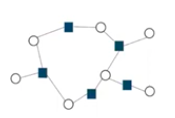cognitive dissonance
Last tended to on September 11, 2021
Links to “cognitive dissonance”
Cognitive Biases: cognitive dissonance theory (Cognitive Biases: cognitive dissonance theory)
Cognitive Dissonance Theory:
- cognitive dissonance
- holding apparently incompatible / logically inconsistent thoughts about the world.
Towards Causal Representation Learning (Some System 2 inductive priors)
Sparse causal graph of high-level, semantically meaningful variables.

Semantic variables are causal: agents, intentions, controllable objects, for example.
Changes in distribution are due to causal interventions (in the aforementioned high-level semantic space.) Provided we have the right abstractions, it would only take a few words to describe this change.
Everything that’s happening can be reported in simple language. (Interesting that this is an example of report/access consciousness.) Mapping from semantic variables <=> sentences
“generic rules” of how things work are shared across instances – need variables / functions / some form of indirection.
Stability/robustness in meaning (e.g. of laws of physics,) even with changes in distribution, vs. things that do change. E.g.: early visual layers are stable after childhood. Later things like object recognition can be adapted to very quickly.
Causal chains to explain things are short. (Interesting: connection to dissonance reduction: we like simple explanations of the world around us (possibly because it helps us streamline our cognition.))